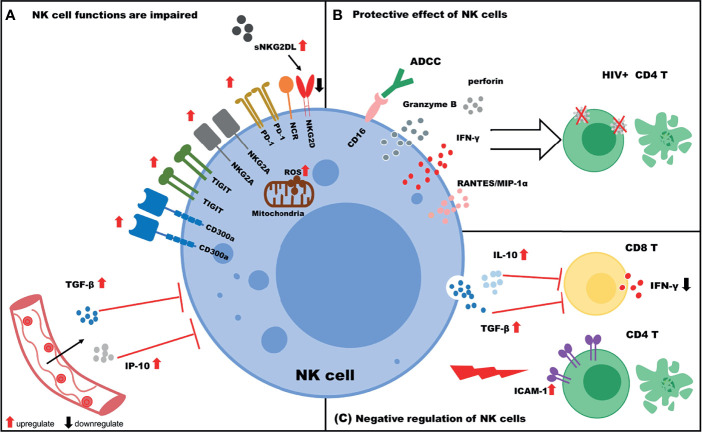Figure 1.
The role of NK cells in HIV infection. (A) NK cell functions are impaired. The expression of NK cell inhibitory receptors (TIGIT, PD-1, CD300a, and NKG2A) is upregulated, and the expression of activating receptors (NKG2D and NCR) is downregulated. Increased IP-10/TGF-β levels in plasma negatively regulate NK cell functions. In addition, increased levels of soluble NKG2DL (sNKG2DL) lead to downregulation of NKG2D expression on NK cells. (B) Protective effect of NK cells. NK cells target HIV+ CD4 T cells via ADCC or the secretion of various cytokines (IFN-γ, Granzyme B, perforin) and chemokines (RANTES, MIP-1α). (C) Negative regulation of NK cells. NK cells inhibit the function of CD8 T cells by secreting IL-10/TGF-β and killing uninfected CD4 T cells due to high expression of ICAM-1.

